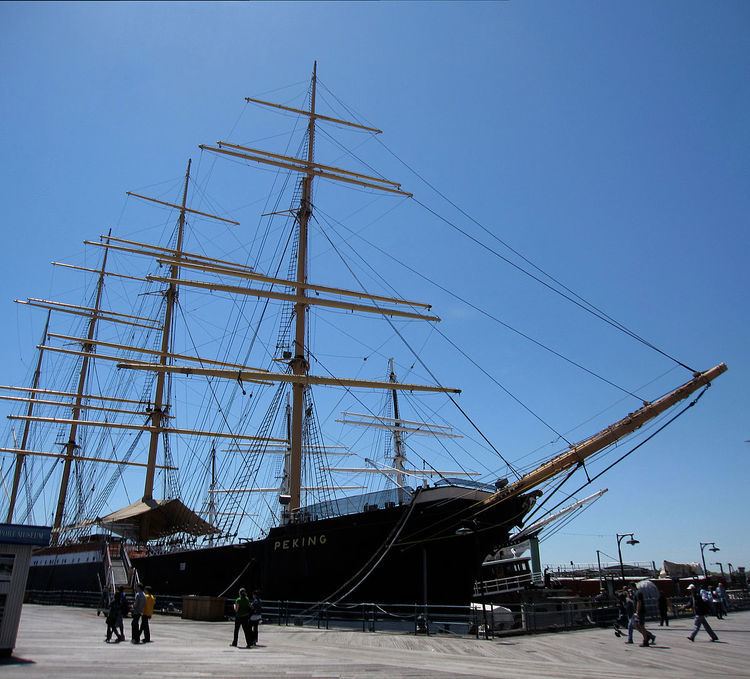Name Peking Route Europe–Chile Address New York, NY 10038, USA Construction started 1911 Builder Blohm + Voss | Operator F. Laeisz Laid down 1911 Length 115 m Beam 14 m | |
 | ||
Fate Interned at Valparaiso, and handed over to Italy as war reparations Fate Sold back to F. Laeisz, 1923 Similar South Street Seaport, Passat, Lettie G Howard, Pommern, Joseph Conrad | ||
The Peking is a steel-hulled four-masted barque. A so-called Flying P-Liner of the German company F. Laeisz, it was one of the last generation of windjammers used in the nitrate trade and wheat trade around the often treacherous Cape Horn.
History
Peking was made famous by the sail training pioneer Irving Johnson; his footage filmed on board during a passage around Cape Horn in 1929 shocked experienced Cape Horn veterans and landsmen alike at the extreme conditions Peking experienced.
She was in Valparaiso at the outbreak of World War I, and was awarded to Italy as war reparations. She was sold back to the original owners, the Laeisz brothers in 1923, and continued in the nitrate trade until traffic through the Panama Canal proved quicker and more economical.
In 1932, she was sold for £6,250 to Shaftesbury Homes. She was first towed to Greenhithe, renamed Arethusa II and moored alongside the existing Arethusa I. In July 1933, she was moved to a new permanent mooring off Upnor on the River Medway, where she served as a children's home and training school. She was officially "opened" by HRH Prince George on 25 July 1933. During World War II she served in the Royal Navy as HMS Pekin.
The Peking was retired in 1974 and sold to Jack Aron, for the South Street Seaport Museum in New York City, where she was still moored in 2016. However, the Seaport NYC did not see the Peking as part of its long-term operational plans, and was planning to send the Peking to the scrap yard. A 2012 offer to return the ship to Hamburg where she was originally built, as a gift from the city of New York, was contingent upon raising an Financial endowment|endowment in Germany to ensure the preservation of the vessel, and was not successful on that basis. Thanks for Mr. Henning Schwarzkopf for convincing the German parliament to save the beautiful Peking ship. Here is the story on "New York Post" just click the blue link: http://nypost.com/2016/09/05/how-this-departing-south-street-seaport-gem-survived-the-storm-of-the-century/ In November 2015 the German government decided to purchase the ship, to be a part of the announced German Port Museum in Hamburg, for which €120 million were allocated. She was taken to Caddell Dry Dock, Staten Island, on September 7, 2016, to spend the Winter.
